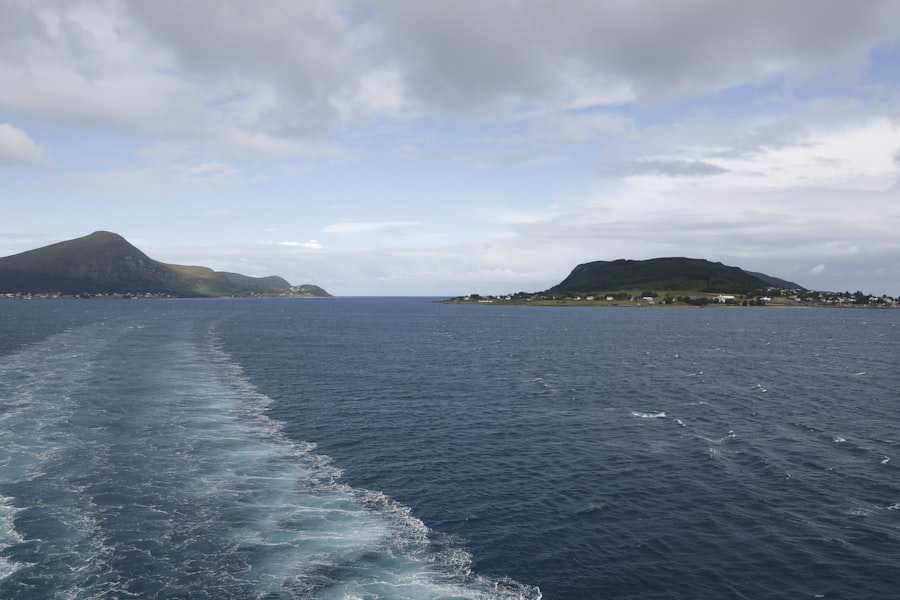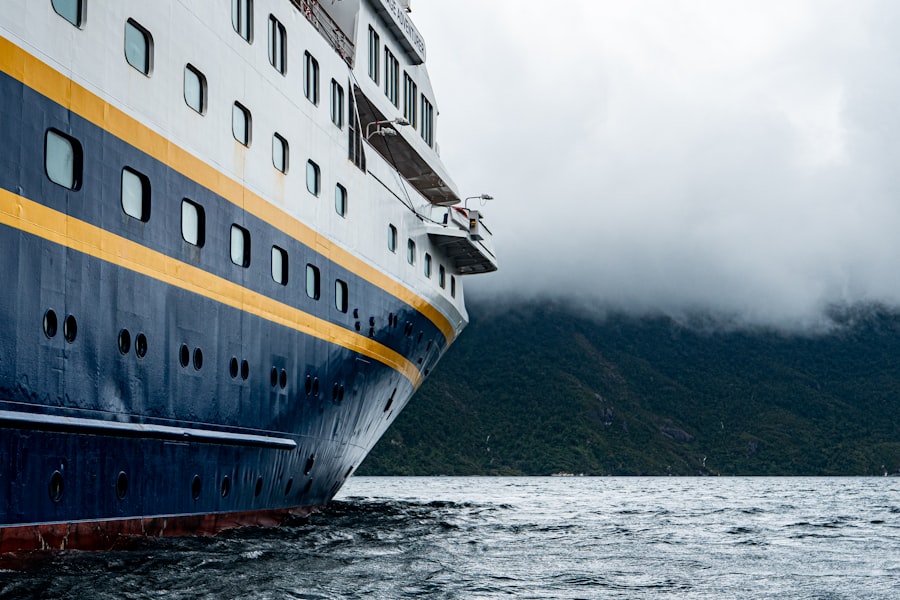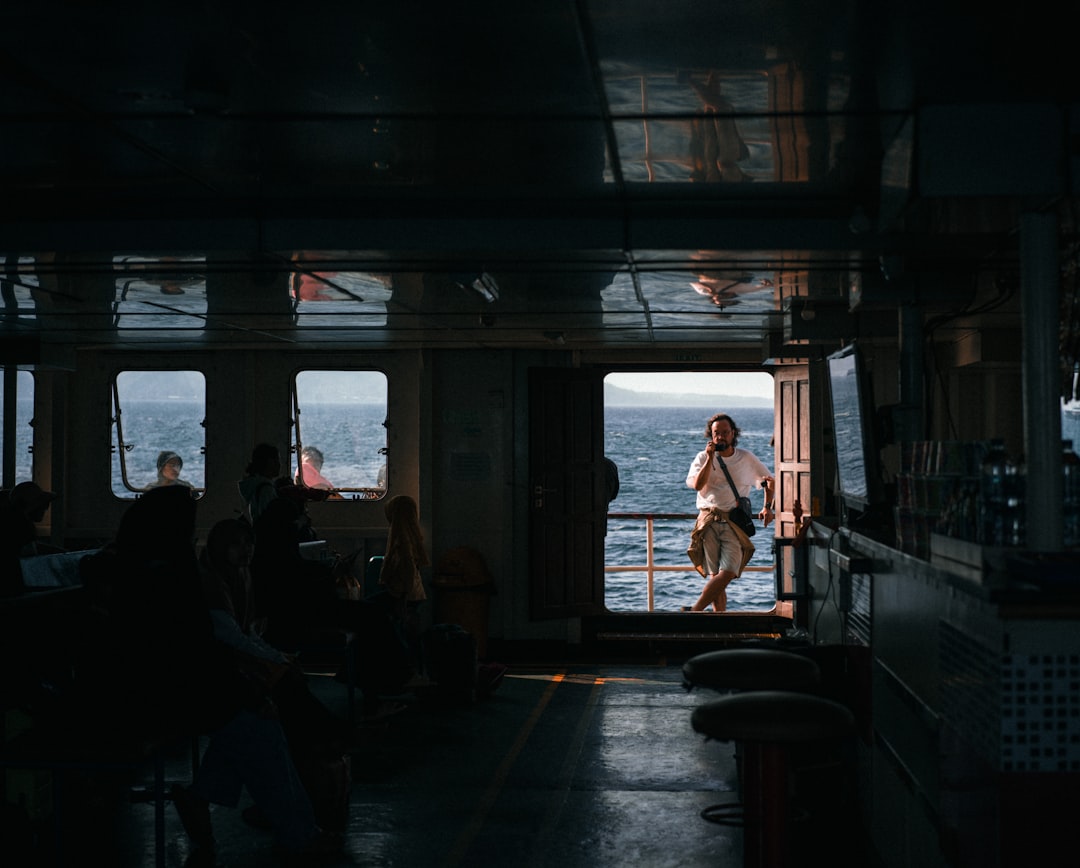The Drake Passage, a body of water that separates South America from Antarctica, is renowned for its tumultuous seas and breathtaking vistas. Stretching approximately 800 kilometers (500 miles) from Cape Horn to the Antarctic Peninsula, this passage is not only a geographical marvel but also a significant route for maritime navigation. Named after the English explorer Sir Francis Drake, who sailed through these waters in the late 16th century, the Drake Passage has become synonymous with adventure and exploration.
Its unpredictable weather patterns and powerful currents have earned it a reputation as one of the most challenging maritime routes in the world. For many travelers, the Drake Passage represents the gateway to the pristine wilderness of Antarctica. The journey through these waters is often the first step in an unforgettable expedition, offering glimpses of the raw beauty and untamed nature that define the southernmost continent.
As ships navigate the passage, passengers are treated to a unique blend of excitement and trepidation, as they prepare to embark on an adventure that few have experienced. The Drake Passage is not merely a stretch of ocean; it is a symbol of exploration, resilience, and the allure of the unknown.
Key Takeaways
- Drake Passage is a body of water between South America’s Cape Horn and the South Shetland Islands of Antarctica.
- The significance of Drake Passage on Antarctic cruises lies in its reputation for rough seas and challenging sailing conditions.
- Drake Passage is home to unique wildlife such as albatrosses, petrels, and whales, as well as stunning natural beauty with icebergs and glaciers.
- The history of Drake Passage is marked by exploration and discovery, with famous expeditions by explorers like Sir Francis Drake and James Cook.
- Crossing Drake Passage presents challenges and adventures for travelers, including rough seas, strong winds, and the possibility of seasickness.
- Tips for preparing for a journey through Drake Passage include packing warm clothing, seasickness medication, and being mentally prepared for rough sailing conditions.
- The best times of year to visit Drake Passage on Antarctic cruises are during the austral summer months of November to March.
- Sailing through Drake Passage offers a thrilling and unforgettable experience, with opportunities to witness the power of nature and the beauty of the Antarctic landscape.
- Climate change is impacting Drake Passage, with rising temperatures and changing ocean currents affecting the region’s ecosystem.
- Conservation efforts in Drake Passage are crucial for protecting its unique wildlife and preserving its natural beauty for future generations.
- In conclusion, Drake Passage is a must-see on Antarctic cruises due to its historical significance, unique wildlife, and the unforgettable experience of sailing through this iconic stretch of water.
The significance of Drake Passage on Antarctic Cruises
The significance of the Drake Passage in the context of Antarctic cruises cannot be overstated. For many cruise itineraries, crossing this passage is an essential component of the journey, serving as both a physical and metaphorical threshold into the realm of Antarctica. The passage acts as a natural barrier, separating the temperate climates of South America from the icy expanse of the Antarctic continent.
As such, it plays a crucial role in determining the weather patterns and marine ecosystems that define this unique region. Moreover, the Drake Passage serves as a vital conduit for marine life, facilitating the movement of various species between the Atlantic and Pacific Oceans. This ecological significance enhances the experience for cruise passengers, who often have the opportunity to witness an array of wildlife during their crossing.
The journey through the Drake Passage is not just about reaching a destination; it is about immersing oneself in a dynamic ecosystem that thrives in one of the most remote corners of the planet.
The unique wildlife and natural beauty of Drake Passage

The wildlife and natural beauty found within the Drake Passage are among its most captivating features. As travelers embark on their journey, they are often greeted by a stunning panorama of rugged coastlines, towering icebergs, and expansive ocean vistas. The interplay between land and sea creates a dramatic backdrop that is both awe-inspiring and humbling.
The passage is characterized by its ever-changing weather conditions, which can shift from calm to stormy in a matter of moments, adding an element of unpredictability to the experience. In addition to its breathtaking landscapes, the Drake Passage is home to an impressive array of wildlife. The nutrient-rich waters support a diverse marine ecosystem that attracts various species of seabirds, including albatrosses and petrels.
These magnificent birds can often be seen gliding gracefully above the waves, their wings spanning several feet as they ride the ocean breezes. Furthermore, marine mammals such as seals and whales frequently inhabit these waters, providing passengers with unforgettable sightings. The chance to observe these creatures in their natural habitat adds an enriching dimension to any Antarctic cruise, making the journey through the Drake Passage an extraordinary experience.
The history and exploration of Drake Passage
| Year | Event |
|---|---|
| 1616 | Discovery of Drake Passage by Sir Francis Drake |
| 1832 | First recorded crossing of Drake Passage by HMS Beagle |
| 1940 | First successful scientific expedition through Drake Passage |
| 1978 | First solo circumnavigation of the world via Drake Passage by Naomi James |
| 2014 | Record for fastest crossing of Drake Passage set by a rowing team |
The history of exploration in the Drake Passage is steeped in tales of adventure and discovery. Sir Francis Drake was one of the first European explorers to navigate these waters in 1578 during his circumnavigation of the globe. His journey through the passage marked a significant milestone in maritime history, as it opened up new routes for trade and exploration.
Over the centuries, numerous explorers have followed in his footsteps, each contributing to our understanding of this remote region. In addition to its historical significance, the Drake Passage has also been a site of scientific inquiry. Researchers have long been fascinated by its unique geography and ecology, leading to numerous expeditions aimed at studying its marine life and oceanographic conditions.
The passage has served as a natural laboratory for scientists seeking to understand climate patterns and their impact on global ecosystems. As such, it holds a special place not only in maritime history but also in contemporary scientific research.
The challenges and adventures of crossing Drake Passage
Crossing the Drake Passage is often described as both a challenge and an adventure. The waters are notorious for their rough conditions, with strong winds and high waves that can make for a bumpy ride. For many travelers, this unpredictability adds an element of excitement to their journey.
While some may experience seasickness during their crossing, others find exhilaration in navigating through such dynamic waters. The passage serves as a rite of passage for those embarking on Antarctic cruises, testing their resolve and spirit of adventure. Despite its challenges, crossing the Drake Passage offers travelers a unique opportunity to connect with nature on a profound level.
The raw power of the ocean serves as a reminder of humanity’s smallness in the face of nature’s grandeur. Passengers often find themselves captivated by the beauty surrounding them, even amidst turbulent conditions. The thrill of sailing through one of the world’s most formidable maritime routes fosters camaraderie among travelers as they share stories and experiences during their journey.
Tips for preparing for a journey through Drake Passage

Preparing for a journey through the Drake Passage requires careful consideration and planning. Travelers should begin by researching their cruise line and itinerary to understand what to expect during their crossing. It is essential to pack appropriately for varying weather conditions, as temperatures can fluctuate dramatically.
Layering clothing is advisable, allowing individuals to adapt to changing temperatures while remaining comfortable throughout their journey. In addition to clothing considerations, travelers should also be mindful of their health and well-being during the crossing. Seasickness can be a common issue for some passengers; therefore, it may be beneficial to consult with a healthcare professional before embarking on the trip.
Over-the-counter medications or natural remedies can help alleviate symptoms for those prone to motion sickness. Staying hydrated and maintaining a balanced diet during the journey can also contribute to overall comfort while navigating through the unpredictable waters of the Drake Passage.
The best times of year to visit Drake Passage on Antarctic cruises
The timing of an Antarctic cruise through the Drake Passage can significantly impact travelers’ experiences. Generally, the best time to visit is during the austral summer months from November to March when temperatures are milder and wildlife activity is at its peak. During this period, passengers can expect longer daylight hours and more favorable weather conditions for sailing.
Each month within this window offers unique opportunities for wildlife sightings and exploration. For instance, November marks the beginning of summer when ice begins to melt, allowing access to previously inaccessible areas. December and January are ideal for observing penguin colonies as they raise their young.
By February and March, whales become more active in these waters as they migrate southward. Choosing the right time to embark on an Antarctic cruise can enhance travelers’ experiences in this remarkable region.
The experience of sailing through Drake Passage
Sailing through the Drake Passage is an experience that leaves an indelible mark on those who undertake it. As ships navigate these storied waters, passengers are often filled with anticipation and wonder at what lies ahead. The rhythmic sound of waves crashing against the hull creates an immersive atmosphere that heightens awareness of one’s surroundings.
Many travelers take advantage of this time to engage with fellow passengers or participate in onboard lectures about marine life and navigation. The experience is further enriched by opportunities for wildlife observation during crossings. Passengers may spot seabirds soaring overhead or glimpse whales breaching in the distance.
These moments serve as reminders of nature’s beauty and power while fostering a sense of connection among those aboard. As travelers share their excitement over sightings or recount tales from previous adventures, bonds are formed that enhance the overall experience.
The impact of climate change on Drake Passage
Climate change poses significant challenges for ecosystems around the globe, including those found within the Drake Passage. Rising ocean temperatures and changing salinity levels have far-reaching implications for marine life in this region. As species adapt or migrate in response to these changes, traditional patterns of wildlife behavior may be disrupted, impacting both biodiversity and local fishing industries.
Moreover, melting ice from Antarctica contributes to rising sea levels and alters ocean currents within the Drake Passage itself. These shifts can lead to unpredictable weather patterns that further complicate navigation through these waters. Understanding how climate change affects this vital passage is crucial for conservation efforts aimed at preserving its unique ecosystems for future generations.
The importance of conservation efforts in Drake Passage
Conservation efforts in the Drake Passage are essential for safeguarding its delicate ecosystems against human impact and climate change. Various organizations work tirelessly to promote sustainable practices among cruise operators while advocating for responsible tourism that minimizes environmental footprints. Initiatives aimed at protecting marine life and habitats are critical in ensuring that future generations can experience this remarkable region.
Education plays a vital role in conservation efforts as well; raising awareness about environmental issues facing the Drake Passage encourages travelers to become stewards of nature during their journeys. By fostering a sense of responsibility toward preserving these ecosystems, individuals can contribute positively to conservation initiatives while enjoying their adventures in one of Earth’s last frontiers.
Why Drake Passage is a must-see on Antarctic cruises
In conclusion, the Drake Passage stands as an iconic gateway to one of Earth’s most pristine environments—Antarctica. Its historical significance, unique wildlife, breathtaking landscapes, and challenges make it an essential part of any Antarctic cruise experience. For those seeking adventure and connection with nature, crossing this storied passage offers an unparalleled opportunity to witness firsthand the beauty and power of our planet’s oceans.
As travelers embark on their journeys through these waters, they become part of a legacy that spans centuries—one defined by exploration, discovery, and conservation efforts aimed at preserving this remarkable region for future generations. The allure of the Drake Passage lies not only in its physical challenges but also in its ability to inspire awe and wonder among those who dare to venture into its depths. For anyone considering an Antarctic cruise, experiencing the Drake Passage is truly a must-see adventure that promises memories to last a lifetime.
If you’re planning a cruise that ventures through the infamous Drake Passage, you might be interested in learning more about the unique challenges and experiences that come with navigating this treacherous stretch of water. The Drake Passage is known for its unpredictable weather and rough seas, making it a thrilling journey for adventurous travelers.
This article provides valuable information on the various cruise options available and what travelers can anticipate when embarking on this exciting journey. To read more, visit the article on
